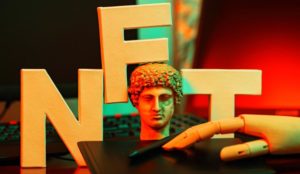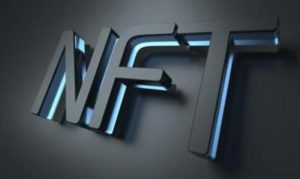Table of Contents
The increasing surge in the adoption of non-fungible tokens (NFTs) has signalled an exciting new phase of digital ownership and asset exchange in the dynamic world of digital assets. This spike in demand is accompanied by a growing need—one that is becoming more and more critical in the digital asset space—for inexpensive indexing platforms and effective access to NFT data.
NFT APIs play a crucial role in addressing this demand by providing developers with the tools they need to navigate the complex blockchain networks that underpin NFTs. These APIs not only make it easier to comprehend the complexities of blockchain technology, but they also open up a world of opportunities for creative digital asset management and improved user interaction. With a focus on their critical importance and providing insights into how they enable users to efficiently utilise the rich data of NFTs, this article takes readers on an exploratory tour into the world of NFT APIs. Let’s begin with the basics of NFT APIs.
About NFT APIs
Primarily, non-fungible token (NFT) Application Programming Interfaces (APIs) are the crucial conduit between the complex world of blockchain technology and the apps that give life to digital assets. By serving as intermediaries, these APIs enable smooth data interchange and communication between different software platforms and decentralised blockchain networks.

If you belong to the digital world, you must know the importance and popularity of cryptocurrencies. The main reason behind their adoption is that beginners can also make investments with little or no prior knowledge. Auto bots like Trader AI make trading easier for beginners. Like cryptocurrency, the NFTs are digitally traded. The original copy is transferred to the buyer in the form of distinct tokens; the tangible assets remain unaltered. Since each NFT is unique, it cannot be cloned or replicated and is hence irreplaceable. In addition, the majority of the information kept in NFT includes ownership history, ownership verification, and all completed transactions.
Why is the NFT API required?
Programs cannot perform a pre-defined NFT-based function on data exchange and pre-defined procedure execution without NFT APIs connecting them. They act as a mediator for developers, enabling them to establish fresh programmatic linkages among the numerous applications that people and businesses utilise daily.
Using APIs to Get NFT Data
The capacity to analyse the underlying data of NFTs is essential to realising their enormous potential. NFT-specific APIs become essential at this point. These APIs offer a variety of endpoints that are specifically designed to meet the needs of non-fungible tokens. With these, developers can query certain NFT details in depth.
This contains ownership information, transaction history, and the extensive metadata that establishes the distinct identity of each token. For example, on networks like Ethereum, which are well known for being widely used in the NFT market, NFT data may be retrieved directly from the blockchain via APIs provided by companies like OpenSea and Rarible.
These APIs allow developers to send structured HTTP requests that yield vital data including the token’s current owner, metadata, and complete transaction history. This procedure streamlines what would otherwise be a difficult engagement with blockchain technology and helps to better understand the NFT’s history and worth. NFT APIs are essential in helping developers create apps that are creative and adaptable to the constantly shifting digital asset market since they offer simplified access to this data.
How To Use NFT Data?

When NFT data is available, developers can use it in a variety of creative ways.
- Marketplace Integration: By providing real-time pricing, availability, and ownership history, NFT data integration in digital marketplaces improves transparency and facilitates seamless transactions.
- Portfolio Tracking: NFT aficionados can use applications powered by NFT APIs to analyse their portfolios of digital assets, evaluating past performance and data to help them decide whether to buy or sell.
- Content Curation: By employing NFT metadata, developers can create topical galleries that let users find NFTs according to certain standards.
- Gamification: Gamification is the process of introducing challenges or incentives based on NFT ownership into programs using NFT data. This increases user engagement.
- Platforms for Education: APIs are essential for creating educational platforms that inform users about the NFT environment by providing information on past transactions, token rarities, and NFT markets.
Top NFT APIs
1. Bitquery
Bitquery NFT API is developer-friendly and provides real-time blockchain data and analytics (NFTs) to owners of non-fungible tokens. If you want to access and evaluate NFT data across many blockchain networks, this is a complete solution for researchers, corporations, and developers. One of the unique features is the capacity to retrieve data from multiple blockchain networks, including Ethereum, Binance Smart Chain, and Polygon.
2. QuickNode
With over 40 years of experience managing distributed systems, high-speed networks, and data centres, QuickNode is a global team. The company was founded by Auston Bunsen and Alex Nabutovsky. Without having to sift through specific intelligent contracts, users may find any NFT, confirm ownership, and obtain transaction history and important collection data using the QuickNode NFT API.

Its blockchain ecosystems’ scalability and the accessibility of its core infrastructure are also renowned attributes. The company develops engaging blockchain applications that grow with more users. All of QuickNode’s utility features, from complex tools and analytics to customizable APIs, are accessible to users via an easy-to-use control panel.
3. Moralis
The blockchain application backend provided by Moralis NFT API is expertly handled. Among the services offered are the following: building indexes, monitoring smart contract events, enabling users to set up on-chain notifications, and automatically syncing users’ balances into the database.
An easy-to-use SDK is available for all functions. All of Moralis’ functionalities are cross-chain by default. With plans to launch on additional networks, it offers one of the fastest methods for designing and implementing dApps on Ethereum, BSC, Polygon, Solana, and Elrond. All Moralis dApps are cross-chain by default.
4. Alchemy

Customers can quickly get all the information they need about NFTs from Ethereum, Polygon, Flow, and other blockchains with the help of the Alchemy NFT API. Instead of searching, indexing, and storing data themselves, users can now submit a single request to retrieve specific NFT information for both ERC-721 and ERC-1155 tokens, such as All NFTs held by an address Metadata and attributes for a given NFT token. When utilising Alchemy’s products, users will need to authenticate their queries with an API key. By using the dashboard, it can be generated.
5. NFTPort
NFTPort API helps developers launch their NFT apps on the market in a matter of hours rather than months by acting as a one-stop, straightforward, and developer-friendly NFT infrastructure and APIs.
NFTPort supports several projects, including Wolf3D, Hashtag Protocol, and POAP. The co-founders of Polygon, Skype, and Wise have backed NFTPort, which was developed by a team that formerly worked for NATO, Nvidia, and Monese. All Ethereum, Polygon, and Tezos NFT data are accessible to users. Files, transactions, metadata, and other things are all included. All of the information is available to users with only a few straightforward API requests.
Final Thoughts
To fully utilise the potential of non-fungible tokens, developers require NFT APIs. By providing quick access to NFT data, these interfaces open the door for creative applications and improved user experiences. Developers may play a major role in driving the expansion of the NFT ecosystem by tackling issues such as scalability, security, and regulatory compliance.
In the future, responsible NFT landscape navigation will depend heavily on the developer, blockchain community, and regulatory body collaboration. What new developments and uses for art and technology will result from this dynamic interaction? As creative as the minds of developers throughout the world are, the possibilities are endless.
Author Profile

- Guest Blogger & Outreach Expert - Interested in Writing Blogs, Articles in Business Niche | News Journalist By Profession in the United Kingdom
Latest entries
 BusinessJuly 1, 2025Wills for Business Owners: Safeguarding Your Enterprise and Legacy
BusinessJuly 1, 2025Wills for Business Owners: Safeguarding Your Enterprise and Legacy Business TipsJune 6, 2025Confidence That Connects the Message
Business TipsJune 6, 2025Confidence That Connects the Message GamingMay 9, 2025Why AI Personalization Is Key for the Next Generation of Betting Platforms?
GamingMay 9, 2025Why AI Personalization Is Key for the Next Generation of Betting Platforms? Business StrategiesMay 1, 2025Key Business Development Strategies for Fostering Sustainable Growth
Business StrategiesMay 1, 2025Key Business Development Strategies for Fostering Sustainable Growth




